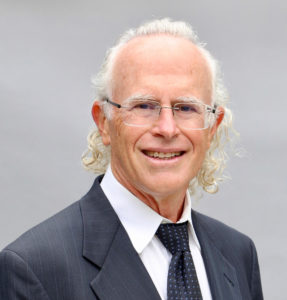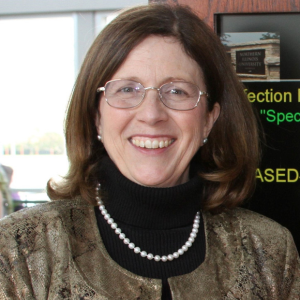Battling Pressure Ulcers: Consistency Means Success
| Battling Pressure Ulcers: Consistency Means Success INTERVIEW WITH COURTNEY H. LYDER, ND |
| Pressure ulcers are a cloud that hovers over long-term care like the cigar smoke that lingers after an all-night poker game: Attempts to make it go away are not always easy. Given the risk factors inherent in a frail elderly population-e.g., immobility, nutritional deficits, and the tendency for skin breakdown-it’s no surprise that pressure ulcers occur in nursing homes. On the other hand, never before have caregivers had available more products and equipment aimed at preventing these wounds, and never before have they had so many options for treating them. |
| So why, despite the advances in prevention and treatment, do pressure ulcers still occur at such high rates in some long-term care facilities? Nursing Homes/Long Term Care Management Editor Linda Zinn asked that question of respected wound care researcher Courtney H. Lyder, ND, and asked him to comment on recent developments. Zinn: Why, when pressure ulcer treatment is so costly, when the potential costs associated with litigation related to pressure ulcers are so high, and when it is so widely known how to prevent and properly treat pressure ulcers, are they still such a problem in long-term care? Dr. Lyder: This problem is largely a consequence of staff turnover. In studies regarding pressure ulcer prevention, we see that if a prevention program is implemented and followed consistently, a significant reduction in the incidence rates occurs. And if you implement treatment programs, you see an increase in wound healing. The problem is maintaining the prevention and treatment protocols consistently. Maintaining consistency is the biggest challenge, and that is difficult with staff regularly coming and going. One way to improve that consistency is to have someone in facility administration-it could be the administrator or the DON-champion the cause of pressure ulcer prevention and treatment. Along with that person you need one or two clinical staff who will also promote the program and motivate line staff to follow it. With that kind of “top-down” support, you can convert the entire staff. I published a study last year on pressure ulcer prevention programs in two nursing homes that previously had been heavily cited by state surveyors for a high incidence of pressure ulcer occurrences. At one of these facilities, the administrator became the program’s champion, and at the other the DON became the driving force behind it. Once they were committed, we identified two experienced nurses at each facility who had been on staff for a long while and, therefore, were unlikely to leave, and we motivated them to help implement the programs. Within only five months, one facility went from a 13.5 to a 1.5% incidence of pressure ulcers; the other went from 15 to 3.5%. That was the good news. The bad news was that the administrator got transferred from one of the two study facilities, and the DON left the other. Without these champions to continue the momentum of what they’d started, the staff got discouraged and the rates went right back up. In fact, a nurse who was one of the clinical champions got so disgusted that this occurred after all the work they’d done, that she also left-after being with the facility 11 years. Zinn: It seems obvious that all frontline staff should be trained in pressure ulcer prevention protocols when they’re first hired. Do you think that happens? Dr. Lyder: I believe nursing homes that aspire to and provide evidence-based nursing care do orient their staff to pressure ulcer prevention protocols. These protocols, when written correctly, can be easily disseminated to staff. Moreover, good protocols can be easily incorporated into the care that is provided to residents on a daily basis. For example, placing a turning schedule at the bedside of a bed-bound resident is an excellent reminder to staff that the resident needs to be turned at least every two hours. Another example is having a pressure ulcer prediction tool as a part of the admission process. Thus, staff can perform a Braden Scale or Norton Scale exam as a part of the routine admission, so they will be less likely to forget this important assessment. Zinn: What have researchers learned about pressure ulcer treatment recently? Dr. Lyder: Wound bed preparation is something we’re learning more about. We now know, for example, that wounds heal best when we remove the edema from the wound bed. Conversely, they don’t heal as efficiently or effectively if the fluid remains. Zinn: In light of that, is negative-pressure wound therapy effective for these edematous wounds? Dr. Lyder: Yes, it works well on highly exudating, full-thickness stage III and IV wounds. However, I’d be more likely to use it on a stage IV than a stage III wound, and I wouldn’t use it at all on stage I or II wounds. Zinn: How about the silver-containing dressings? Dr. Lyder: This is one of the biggest recent breakthroughs in wound care. It goes back to wound bed preparation again-in this case as it relates to the bacterial burden within wounds. Silver, regardless of how it’s delivered, is a good product for decreasing the bacterial loads in pressure ulcers that are infected or are on their way to being infected. Zinn: Aren’t all wounds potentially on their way to being infected? Dr. Lyder: Yes, but there are certain signs to look for: a wound with excessive exudate or drainage, or more than the usual amount of blood; or a wound site that is warmer to the touch than normal. These are indications that there’s something brewing. All wounds contain bacteria, of course, and a bacterial “war” of sorts takes place at wound sites, with beneficial bacteria fighting infection-causing bacteria. What raises concern is when one of the infectious organisms, such as Staphylococcus aureus or S epidermidis, becomes dominant-in clinical terms, it reaches 10 to the fifth or sixth power. When that occurs, an infection has developed, and it will stop a wound from healing. The silver-impregnated dressings effectively reduce the bacterial counts in such cases, thus allowing the wounds to heal. Zinn: Have there been any other noteworthy developments in wound care? Dr. Lyder: Dressings containing hyaluronic acid are very promising. These dressings are very expensive and, to my knowledge, are not reimbursed by Medicare. In Virginia, they are also not reimbursed by Medicaid, although they might be in some states. For residents who have a chronic wound, if the clinician has not seen any improvement in healing for about two to three months, and if the wound does not appear infected, I would think about using a dressing impregnated with hyaluronic acid for a short time (two to three weeks) to “jump start” the ulcer. Then I would switch to a non-gauze-based dressing to maintain a moist wound environment to allow the resident’s body time to heal the ulcer. Another event that people should know about, which took place within the last year, was the Centers for Medicare and Medicaid Services’ decision to revoke reimbursement for radiant therapy for wounds. This was the treatment approach involving a greenhouse-type device that was used as adjunctive therapy, to keep the wound bed warm. The CMS rationale for withdrawing reimbursement for this treatment was that there were insufficient data to show its effectiveness. On a more positive note, another fairly recent development is a portable ultrasound scanner that has been found effective at detecting pressure ulcers before they actually become open wounds. This piece of equipment is particularly helpful in preventing the following scenario: Someone is transferred to a nursing home from a hospital and has what appears upon visual examination to be a stage I ulcer. Two days later it seems to have suddenly progressed to a stage IV ulcer, down to the bone. Now the nursing home “owns it,” even though it developed in the hospital. With this device, you can scan that stage I wound to make sure there isn’t deep tissue damage-i.e., a stage IV wound mimicking a stage I wound. This scanner can also be used to measure healing, which helps to direct treatment. Up until now, nurses have been limited to a two-dimensional picture and the appearance of exudate for assessing a wound. This is especially significant because of a widely followed rule of thumb in wound treatment: that a different wound product should be tried if there’s been no progress after two weeks with what’s being used. With this scanner, we can see if healing has taken place in deeper tissue and not just on the surface. If so, we can continue the treatment that’s working. This device takes the guesswork out of wound treatment. NH |
| Courtney H. Lyder, ND, is Professor of Nursing at the University of Virginia Medical Center and Professor of Internal Medicine and Geriatrics at the University of Virginia School of Nursing, Charlottesville. To contact Dr. Lyder, call (434) 982-3298. To comment on this article, please send e-mail to lyder0104@nursinghomesmagazine.com. |
I Advance Senior Care is the industry-leading source for practical, in-depth, business-building, and resident care information for owners, executives, administrators, and directors of nursing at assisted living communities, skilled nursing facilities, post-acute facilities, and continuing care retirement communities. The I Advance Senior Care editorial team and industry experts provide market analysis, strategic direction, policy commentary, clinical best-practices, business management, and technology breakthroughs.
I Advance Senior Care is part of the Institute for the Advancement of Senior Care and published by Plain-English Health Care.
Related Articles
Topics: Articles , Clinical











